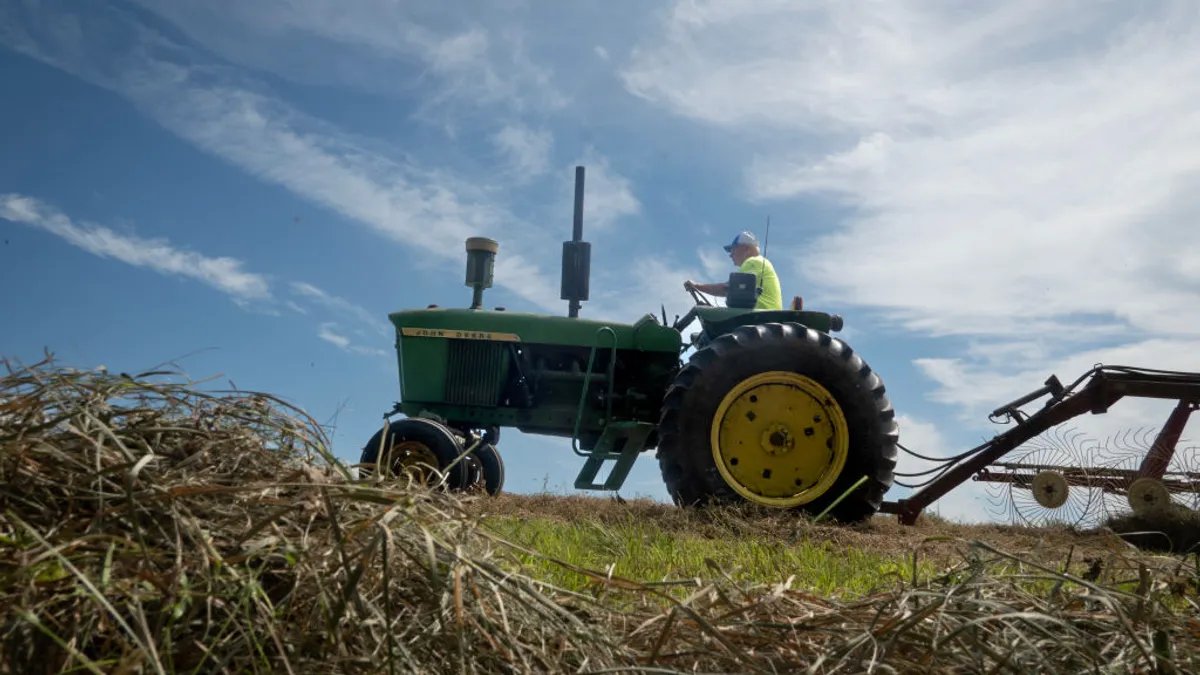Dive Brief:
- Farmers are taking out loans at a rate and scale not seen in years as weakened crop prices weigh on the agricultural sector, according to a report from the Federal Reserve Bank of Kansas City.
- The volume of new operating loans increased at its fastest pace since 2017, the report said, with commercial banks issuing 40% more of these loans to farmers over last year.
- Farmers are not only taking out more loans, but also borrowing higher amounts. For the first time in at least two decades, loans larger than $1 million made up the majority of lending volume.
Dive Insight:
A significant nosedive in crop prices has created a punishing economic environment for farmers, with smaller-sized operations feeling the brunt.
Growth in loan volumes was concentrated among small and mid-sized lenders, the Federal Reserve report said, underscoring difficulties for family farms and other smaller operations without deep pockets to weather the volatility.
Higher lending from smaller banks stands in contrast to what was seen coming out of the pandemic, when lending activity declined at smaller lenders and increased at larger institutions. Loan volumes at smaller institutions began increasing in 2023 and into 2024, according to the report.
Farmers are grappling with weakened global demand and a glut of corn and soybeans, which has contributed to a decline in the prices paid to producers. The deteriorating environment has also disincentivized growers from buying new equipment or making other upgrades, with demand for loans that typically fund miscellaneous purchases slowing significantly.
"Weak profit margins in the crop sector continued to weigh on the farm economy," the report said. "A moderation in farm sector liquidity and higher interest rates has likely contributed to reduced demand for machinery lending and reduced spending on more discretionary purchases.”











